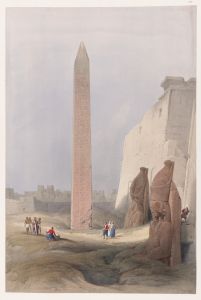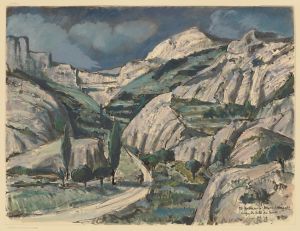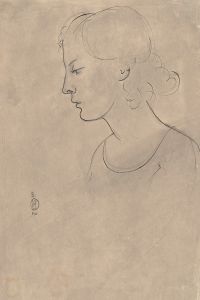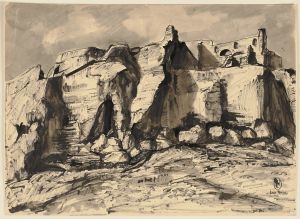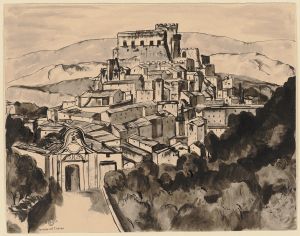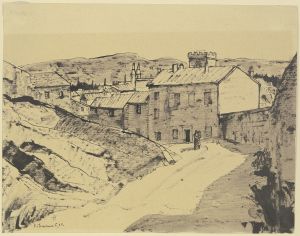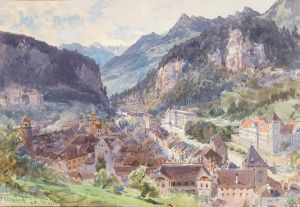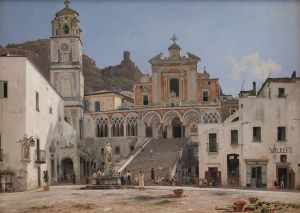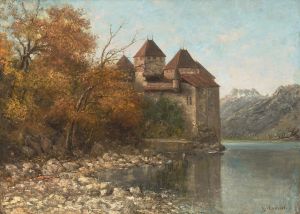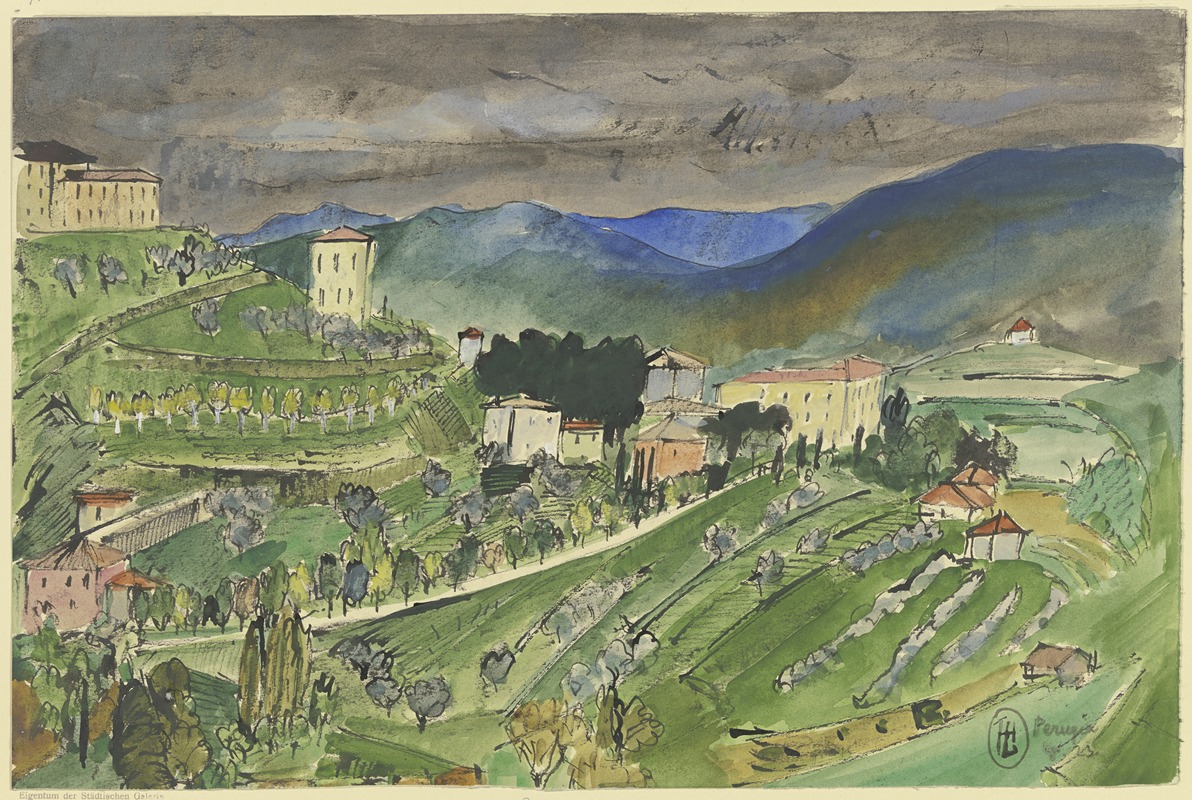
Perugia
A hand-painted replica of Hermann Lismann’s masterpiece Perugia, meticulously crafted by professional artists to capture the true essence of the original. Each piece is created with museum-quality canvas and rare mineral pigments, carefully painted by experienced artists with delicate brushstrokes and rich, layered colors to perfectly recreate the texture of the original artwork. Unlike machine-printed reproductions, this hand-painted version brings the painting to life, infused with the artist’s emotions and skill in every stroke. Whether for personal collection or home decoration, it instantly elevates the artistic atmosphere of any space.
Hermann Lismann (1878–1943) was a German painter known for his contributions to the Impressionist movement. One of his notable works is the painting "Perugia," which captures the essence of the Italian city of Perugia. Lismann's artistic style is characterized by his use of vibrant colors and dynamic brushstrokes, which are evident in this particular piece.
"Perugia" by Hermann Lismann is a landscape painting that depicts the scenic beauty of the historic city located in the Umbria region of Italy. The painting showcases Lismann's ability to capture the atmospheric qualities of the location, with a focus on the interplay of light and shadow. The city of Perugia, known for its medieval architecture and rich cultural heritage, is rendered with a sense of immediacy and liveliness in Lismann's work.
The painting likely dates from the early 20th century, a period when Lismann was actively traveling and painting various European landscapes. His travels to Italy, particularly to cities like Perugia, provided him with ample inspiration and subject matter for his work. Lismann's "Perugia" reflects his deep appreciation for the Italian landscape and its historical significance.
Lismann's technique in "Perugia" involves the use of loose, expressive brushstrokes that convey the texture and atmosphere of the scene. The composition is balanced, with a harmonious arrangement of architectural elements and natural surroundings. The use of color is particularly striking, with warm earth tones and cool blues creating a sense of depth and perspective.
Hermann Lismann was part of the broader European art scene during a time of significant artistic innovation and experimentation. His work, including "Perugia," contributes to the understanding of the Impressionist movement and its impact on landscape painting. Lismann's ability to capture the essence of a place through his unique artistic vision makes "Perugia" a valuable piece in the study of early 20th-century European art.
Unfortunately, detailed information about the specific circumstances of the creation of "Perugia," such as the exact date of its completion or its current location, is not readily available. However, the painting remains an important example of Lismann's work and his contribution to the Impressionist tradition.
In summary, "Perugia" by Hermann Lismann is a significant landscape painting that captures the beauty and atmosphere of the Italian city. Through his use of color, composition, and brushwork, Lismann brings the scene to life, reflecting his skill and artistic vision. The painting stands as a testament to Lismann's talent and his place within the broader context of European Impressionism.






